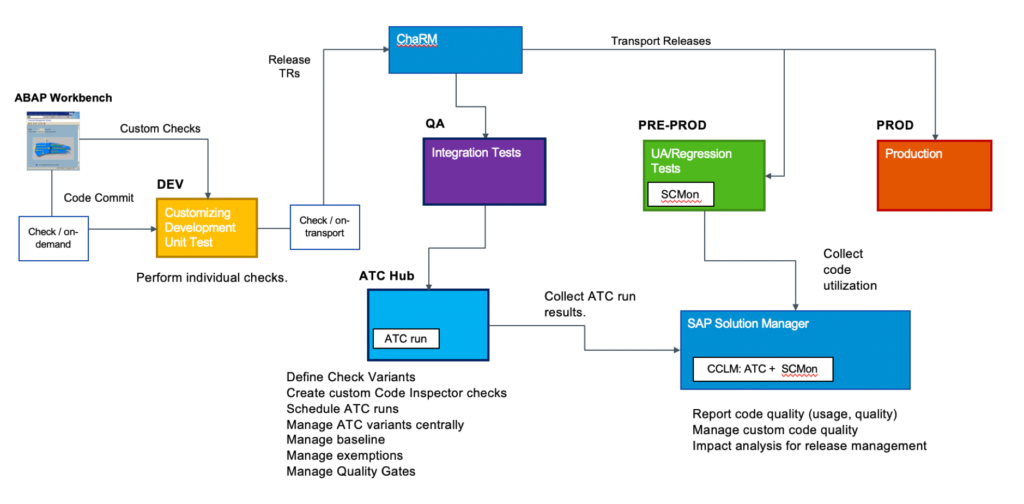
Understanding the Importance of ABAP Development Best Practices
SAP ABAP (Advanced Business Application Programming) is the cornerstone of SAP systems. It’s the language used to develop, customize, and maintain SAP applications. Writing efficient, maintainable, and secure ABAP code is crucial for the overall performance and stability of an SAP system. Adhering to best practices is not just a recommendation; it’s a necessity.
Foundational Best Practices
Code Readability and Maintainability
- Meaningful Naming Conventions: Use clear and descriptive names for variables, constants, and data types. Avoid cryptic abbreviations.
- Consistent Formatting: Employ consistent indentation, spacing, and code layout for enhanced readability.
- Comments: Provide clear and concise comments to explain complex logic or code sections.
- Modularity: Break down code into smaller, reusable modules or functions.
- Object-Oriented Programming (OOP): Leverage OOP concepts like encapsulation, inheritance, and polymorphism for better code structure.
Performance Optimization
- Database Access Optimization: Minimize database round trips, use efficient SELECT statements, and consider indexing.
- Internal Tables: Optimize internal table handling by using appropriate work areas and header lines.
- Performance-Aware Coding: Profile code to identify performance bottlenecks and apply optimizations.
- Data Dictionary Optimization: Ensure data types and structures are optimized for performance.
Error Handling and Debugging
- Exception Handling: Implement robust error handling mechanisms to prevent system crashes.
- Debugging Tools: Utilize debugging tools effectively to identify and fix issues.
- Unit Testing: Write comprehensive unit tests to ensure code quality and prevent regressions.
Security
- Authorization Checks: Implement proper authorization checks to protect sensitive data.
- Input Validation: Validate user input to prevent security vulnerabilities.
- Secure Coding Practices: Adhere to secure coding standards to mitigate risks.
Advanced Best Practices
ABAP Objects
- Encapsulation: Protect data integrity by encapsulating data and methods within classes.
- Inheritance: Create class hierarchies to promote code reuse and maintainability.
- Polymorphism: Enable flexible code design through polymorphism.
Performance Tuning
- SQL Performance Tuning: Optimize database queries using indexes, joins, and SQL tuning techniques.
- ABAP Memory Management: Manage memory efficiently to avoid performance issues.
- Batch Jobs: Schedule resource-intensive tasks for off-peak hours.
SAP HANA Integration
- AMDP (ABAP Managed Database Procedures): Leverage AMDP for performance-critical calculations.
- CDS (Core Data Services): Use CDS views for efficient data access.
- HANA-Optimized ABAP: Write ABAP code that takes advantage of HANA’s in-memory capabilities.
Testing and Quality Assurance
- Test-Driven Development (TDD): Write tests before writing code.
- Code Reviews: Conduct regular code reviews to improve code quality.
- Static Code Analysis: Use static code analysis tools to identify potential issues.
Best Practices for Specific ABAP Areas
Reports
- Performance Optimization: Use ALV Grid Control for efficient data display.
- User Interface: Design user-friendly reports with clear layouts and filters.
Dialog Programming
- Screen Design: Create intuitive and visually appealing screens.
- PBO and PAI: Understand the PBO and PAI modules for screen processing.
- Dynpros: Use dynamic programming for flexible screen layouts.
Function Modules
- Modularity: Create reusable function modules with clear interfaces.
- Performance: Optimize function module performance by avoiding unnecessary database accesses.
- Error Handling: Implement proper error handling mechanisms.
BAPIs
- Consistency: Adhere to BAPI standards for data consistency.
- Performance: Optimize BAPI performance for efficient data transfer.
- Error Handling: Handle errors gracefully to provide meaningful messages.
Continuous Improvement
- Stay Updated: Keep up with the latest ABAP developments and best practices.
- Learn from Others: Share knowledge and learn from experienced ABAP developers.
- Code Refactoring: Regularly review and improve existing code.
Conclusion
By following these best practices, you can significantly enhance the quality, efficiency, and maintainability of your ABAP code. Remember, mastering ABAP development is an ongoing journey. Continuous learning and improvement are essential for staying ahead in the SAP landscape.




